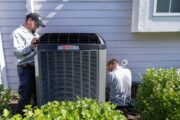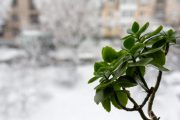(BPT) –
Longing for allergy relief? To stop the endless cycle of sniffles, sneezes and wheezes, it’s time to ready your vacuum and rubber gloves. Spring cleaning helps eliminate allergens so you can relax, breathe easy and enjoy the season.
“People who suffer from allergies may not realize there’s a direct connection between cleaning your home and reducing allergy symptoms,” says allergist Bryan Martin, DO, president of the American College of Allergy, Asthma and Immunology (ACAAI.) “The more you can rid your home of dust mites, mold, cockroaches and pet dander, the easier you’ll breathe.”
ACAAI recommends seven spring cleaning steps to remove allergens in the home and avoid accidentally letting more in.
Step 1: To sleep, perchance to dream – and breathe.
Start in the bedroom where you spend eight to 10 hours a day. Dust mites can flourish during cold, dreary months, so wash your sheets and comforter regularly. Most mites die by drowning, but if you want to use hot water (which will kill slightly more mites) don’t use water that’s over 120 F because it can scald.
Remember to also wash decorative pillows. Finish by adding allergy-proof casings to the mattress, box spring and pillows. Keep pets out of the bedroom as their dander can cause symptoms to flare.
Step 2: Gaze out, but don’t open.
Window treatments are a magnet for dust and allergens. Pull them down and dry clean, or vacuum each thoroughly. Don’t forget to vacuum blinds and windowsills as well. Tempted to open the windows to let the spring breeze in? Don’t. Unwanted pollen can enter your home and spread everywhere.
Step 3: When the dust settles, wipe it off.
Suit up to win the war on dust by wearing protective gloves and a face mask so you don’t breathe in microscopic mold spores. Next, ditch cotton cloths and feather dusters that kick up allergens, and instead use microfiber cleaning cloths which trap and remove triggers. Wipe down all surfaces including picture frames, knickknacks, plant saucers and ceiling fans.
Step 4: Nature abhors a vacuum. You shouldn’t.
Move all furniture, and vacuum the dust and dander that collects underneath. Use a cyclonic vacuum, which spins dust and dirt away from the floor, or a vacuum with a HEPA (high efficiency particulate air) filter. Additionally, clean vents and return registers to limit dust recirculating. Consider shampooing carpets to remove deeply embedded allergens.
Step 5: Scrub-a-dub the mold.
In bathrooms, basements and tiled spaces, scrub any visible mold and mildew from surfaces with bleach, or borax mixed with water, then dry completely. The key to reducing mold is moisture control, so use bathroom fans and clean any standing water immediately. You can also help ward off mold by keeping home humidity below 50 percent.
Step 6: Change is good – for filters.
Keep the air that circulates through your home’s ventilation system clean by using filters with a MERV rating of 11 or 12. Change the filter at the change of every season, or every three months. (Set a calendar reminder to remember). Additionally, change filters in HEPA appliances. This helps eliminate allergens, and prohibits mold growth.
Step 7: Get out! And about.
Check your home’s exterior for any concerns that may have emerged due to cold weather. Chipped paint, roof damage or cracked siding can lead to mold problems. Make repairs as necessary.
These seven spring cleaning steps may take a few weekends to complete, but they’ll help reduce allergens all season long. For more information, or to find an allergist in your area, visit AllergyAndAsthmaRelief.org.


